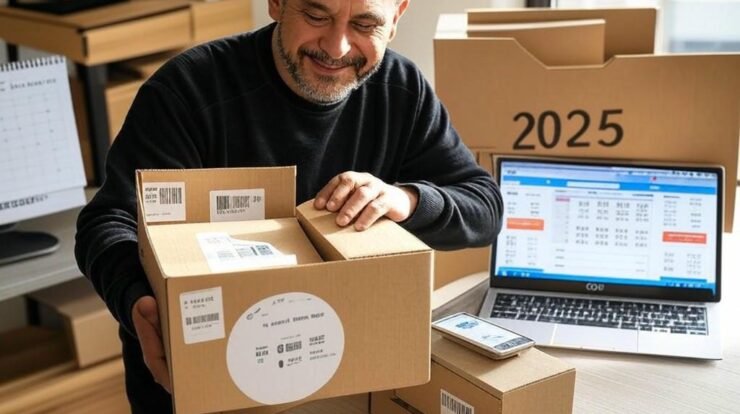Blogging has evolved from a hobby into a legitimate way to make money online. For beginners, the idea of turning a passion for writing into a steady income stream can feel like a dream, but it’s entirely achievable with the right approach. Whether you’re a stay-at-home parent, a college student, or someone looking to escape the 9-to-5 grind, blogging offers a flexible, creative path to financial independence. In this comprehensive guide, I’ll walk you through the essential steps to start a blog, grow an audience, and monetize your content effectively. With practical tips, real-world examples, and strategies I’ve honed over years of blogging, you’ll learn how to make money blogging as a beginner.
Why Blogging Is a Viable Way to Earn Money
Blogging isn’t a get-rich-quick scheme, but it’s a powerful platform for building a sustainable income. According to a 2023 survey by ProBlogger, over 60% of bloggers who consistently publish content earn at least $500 a month, with top earners pulling in six figures annually. The beauty of blogging lies in its low startup costs and flexibility—you can start with a laptop, an internet connection, and a few dollars for hosting. Plus, it allows you to share your expertise, connect with like-minded people, and build a personal brand that opens doors to multiple revenue streams.
The key to success is understanding that blogging rewards patience, consistency, and strategy. You’re not just writing posts; you’re creating a business. Let’s dive into the actionable steps to make money blogging, starting with the foundation: setting up your blog.
Step 1: Choose a Profitable Niche
Your blog’s niche is the cornerstone of your success. A niche is simply the topic or theme your blog focuses on, and choosing the right one can make or break your earning potential. Beginners often make the mistake of blogging about everything, but a focused niche helps you attract a dedicated audience and stand out in a crowded online space.
How to Pick a Niche
- Passion Meets Profitability: Choose a topic you’re passionate about but also has monetization potential. For example, niches like personal finance, health and wellness, travel, or technology tend to attract advertisers and affiliate programs. I started my first blog about budget travel because I loved exploring new places and found plenty of affiliate opportunities with travel gear and booking platforms.
- Research Demand: Use tools like Google Trends or AnswerThePublic to see what people are searching for. For instance, “how to save money on groceries” is a high-demand topic in the personal finance niche.
- Check Competition: Look at successful blogs in your potential niche. If they’re thriving, it’s a sign there’s money to be made. Tools like Ahrefs or Ubersuggest can show you what keywords competitors rank for, helping you identify gaps to fill.
Once you’ve chosen a niche, narrow it down. Instead of “health,” focus on “plant-based diets for busy moms” or “yoga for beginners.” Specificity attracts a loyal audience and makes it easier to target high-value keywords like “how to make money blogging for beginners.”
Read more: Exploring Online Jobs That Pay Through PayPal: A Personal Journey to Financial Freedom
Step 2: Set Up Your Blog the Right Way
Starting a blog is simpler than it sounds, but doing it right from the beginning saves you headaches later. Here’s how to get your blog up and running.
Buy a Domain and Hosting
Your domain name is your blog’s address (e.g., www.yourblogname.com). Choose something memorable, brandable, and related to your niche. For example, a blog about eco-friendly living could be “GreenVibesDaily.com.” Avoid free platforms like Blogger or WordPress.com, as they limit your control and monetization options. Instead, opt for self-hosted WordPress.org, which 43% of websites use for its flexibility and professional features.
For hosting, I recommend Bluehost or SiteGround. Both offer affordable plans (starting at $3–$7/month) with one-click WordPress installation and reliable customer support. When I launched my first blog, I used Bluehost because it included a free domain for the first year, which kept costs low.
Design a User-Friendly Blog
A clean, professional design builds trust with your readers. Choose a lightweight, responsive WordPress theme like Astra or GeneratePress. Focus on:
- Fast Loading Speed: Slow sites drive readers away. Use plugins like WP Rocket to optimize performance.
- Mobile Optimization: Over 50% of web traffic comes from mobile devices, so ensure your blog looks great on phones.
- Easy Navigation: Include a clear menu, search bar, and categories to help readers find content.
Install Essential Plugins
Plugins enhance your blog’s functionality. Start with:
- Yoast SEO: Optimizes your posts for search engines.
- Google Analytics: Tracks your traffic and audience behavior.
- WPForms: Creates contact forms for reader inquiries.
- UpdraftPlus: Backs up your site to prevent data loss.
With your blog set up, it’s time to create content that attracts readers and ranks on Google.
Step 3: Create High-Quality, SEO-Optimized Content
Content is the heart of your blog. To make money blogging, you need posts that solve problems, engage readers, and rank well on search engines. This is where search engine optimization (SEO) comes in—it’s the process of making your content discoverable on Google.
Research Keywords
Keywords are the phrases people type into Google, like “how to make money blogging for beginners” or “best blogging tips for newbies.” Use tools like Google Keyword Planner or Ubersuggest to find low-competition, high-traffic keywords. Aim for long-tail keywords (four or more words) because they’re easier to rank for. For example, “how to start a blog and make money” is more specific than “blogging tips.”
Write Compelling Content
Every post should provide value. Here’s a formula I’ve used successfully:
- Hook: Start with a relatable story or surprising stat. For example, “I earned my first $100 blogging in just three months—here’s how you can too.”
- Problem-Solution: Address a reader’s pain point (e.g., “Struggling to monetize your blog?”) and offer actionable solutions.
- Clear Structure: Use headings, bullet points, and short paragraphs for readability.
- Call to Action: End with a prompt, like “Sign up for my newsletter for more blogging tips!”
Optimize for SEO
To rank higher on Google, incorporate your target keyword naturally in:
- The post title (e.g., “Beginner’s Guide to Earning a Living Through Blogging”)
- The URL (e.g., yourblog.com/how-to-make-money-blogging)
- The first 100 words of your post
- Subheadings and throughout the content (aim for 1–2% keyword density)
- Image alt text and meta descriptions
For example, my most successful post, “How to Save $1,000 in 30 Days,” ranks on Google’s first page because I targeted a specific keyword, included practical tips, and updated it regularly to keep it fresh.
Post Consistently
Aim for 1–2 high-quality posts per week. Consistency builds trust with readers and signals to Google that your site is active. Batch-write content to save time, and use a content calendar to plan topics around seasonal trends (e.g., “budget holiday gift ideas” in November).
Read more: Best Things to Sell Online to Make Money in 2025: A Blogger’s Guide to Earning a Living from Home
Step 4: Grow Your Audience
A blog without readers is like a store with no customers. To make money, you need traffic. Here are proven ways to grow your audience as a beginner.
Leverage Social Media
Share your posts on platforms like Pinterest, Instagram, and Twitter/X. Pinterest is especially powerful for driving traffic to niche blogs like food, travel, or lifestyle. Create eye-catching pins with tools like Canva and include keywords in your pin descriptions. For example, my travel blog got 10,000 monthly visitors from Pinterest alone after I optimized my pins.
Build an Email List
An email list lets you connect directly with readers, bypassing algorithm changes on social media or search engines. Offer a freebie, like an eBook or checklist, to encourage sign-ups. I used Mailchimp to start my list and offered a “7-Day Blogging Starter Guide” that grew my subscribers to 1,000 in six months.
Engage with Your Community
Respond to comments on your blog and engage with followers on social media. Join niche-specific Facebook groups or Reddit communities to share your expertise (without spamming). Building relationships turns casual readers into loyal fans.
Step 5: Monetize Your Blog
Once you have traffic (even just 1,000 monthly visitors), you can start making money. Here are the best monetization methods for beginners.
Affiliate Marketing
Affiliate marketing involves promoting products and earning a commission for each sale made through your links. Sign up for programs like:
- Amazon Associates: Great for product reviews (e.g., “Best Laptops for Bloggers”).
- ShareASale or CJ Affiliate: Offer higher commissions for niche-specific products.
- ClickBank: Ideal for digital products like eBooks or courses.
For example, a post about “Top 10 Budget Travel Gadgets” with Amazon affiliate links can earn $50–$200 a month with modest traffic. Always disclose affiliate links to build trust and comply with regulations.
Sponsored Posts
Brands may pay you to write posts featuring their products. Rates range from $50 for new bloggers to $1,000+ for established ones. Join networks like IZEA or reach out to brands in your niche. My first sponsored post for a travel app paid $75, which felt like a huge win at the time.
Display Ads
Ad networks like Google AdSense or Mediavine display ads on your blog, paying you based on views or clicks. AdSense is beginner-friendly but pays less (around $1–$5 per 1,000 views). Mediavine requires 50,000 monthly sessions but offers higher rates. I switched to Mediavine after hitting 60,000 sessions, and my ad revenue jumped from $50 to $500 a month.
Sell Digital Products
Create and sell your own products, like eBooks, printables, or online courses. For example, a food blogger could sell a “30-Day Meal Prep Guide” for $15. Platforms like Gumroad or Teachable make this easy. Digital products have high profit margins because there’s no inventory to manage.
Offer Services
Use your blog to promote freelance services like writing, coaching, or consulting. For instance, a parenting blogger could offer one-on-one coaching for new moms. I started offering blog setup services after readers kept asking for help, earning $200 per client.
Read more: Unboxing the Future – PeteBot Review and Insights
Step 6: Scale Your Income
As your blog grows, focus on scaling your income. Here’s how:
- Diversify Revenue Streams: Combine affiliate marketing, ads, and products to reduce reliance on one source.
- Optimize High-Performing Posts: Use Google Analytics to identify your top posts and update them with fresh content or better keywords.
- Outsource Tasks: Hire a virtual assistant or freelance writer to handle repetitive tasks, freeing you to focus on strategy.
- Experiment with New Platforms: Repurpose your content into YouTube videos or podcasts to reach new audiences.
Common Mistakes to Avoid
Beginners often stumble, but you can avoid these pitfalls:
- Chasing Trends: Don’t jump on every viral topic. Stick to your niche to build authority.
- Ignoring SEO: Without optimization, your posts won’t rank, and traffic will stall.
- Giving Up Too Soon: Blogging takes time. Most bloggers don’t earn significant income until 6–12 months in.
- Neglecting Analytics: Track your traffic and earnings to understand what works.
My Journey and Lessons Learned
When I started blogging, I had no idea what I was doing. I picked a niche I loved (travel), fumbled through WordPress, and spent months writing posts that got zero views. But I kept learning—taking free SEO courses, joining blogging communities, and experimenting with monetization. My first $100 from affiliate marketing felt like winning the lottery, and by year two, I was earning $2,000 a month. The biggest lesson? Success comes from consistent effort and adapting to what your audience wants.
Final Thoughts
Blogging is a marathon, not a sprint. By choosing a profitable niche, creating valuable content, growing your audience, and diversifying your income streams, you can turn your blog into a money-making machine. Start small, stay consistent, and don’t be afraid to experiment. Whether you’re aiming for a side hustle or a full-time career, blogging offers endless possibilities. Ready to take the first step? Set up your blog today, write your first post, and start building your path to financial freedom.






